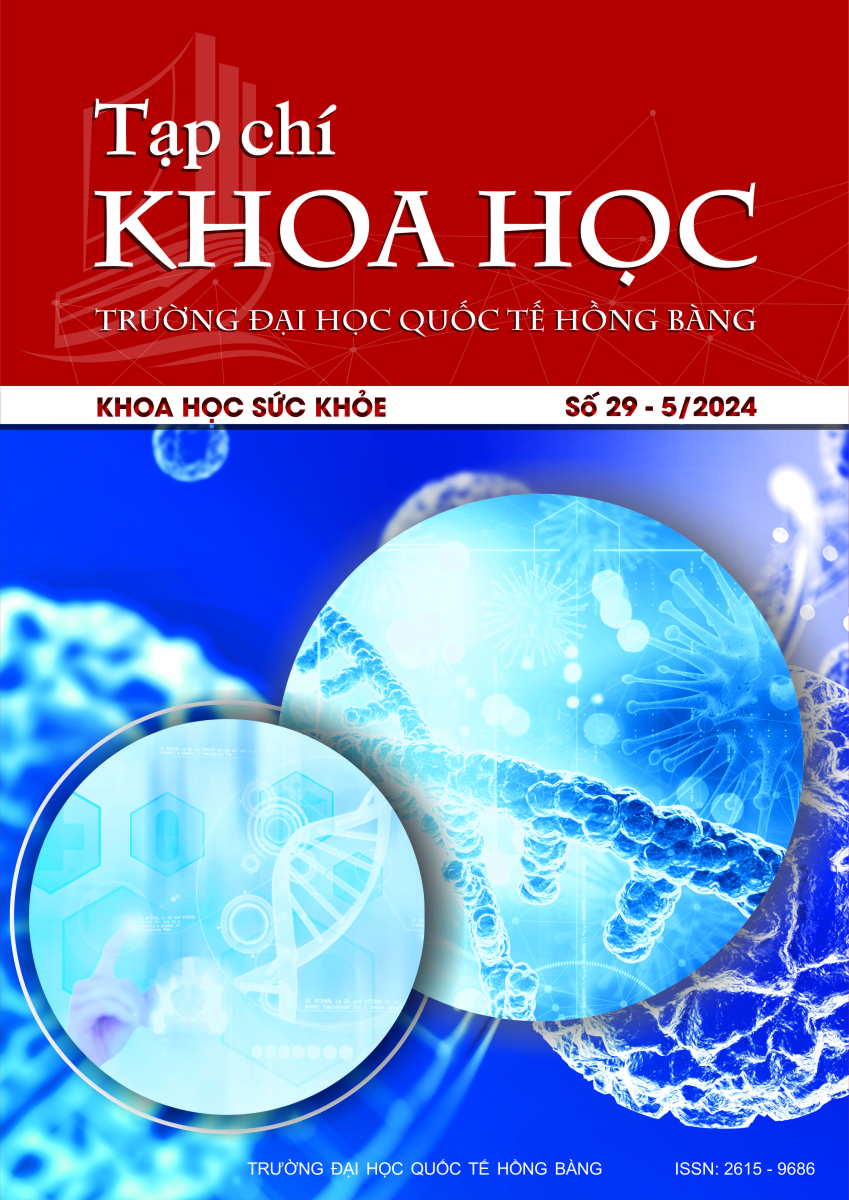Đặc điểm thực vật, thông tin di truyền ITS và matK của cây Zingiber densissimum S.Q.Tong & Y.M.Xia họ Gừng (Zingiberaceae)
Các tác giả
DOI: https://doi.org/10.59294/HIUJS.29.2024.622Từ khóa:
Zingiber densissimum, hình thái, vi học, vùng gen ITS, matKTóm tắt
Thân rễ Zingiber densissimum S.Q.Tong & Y.M.Xia giàu các thành phần có hoạt tính chống oxy hóa và chất ức chế enzym tyrosinase. Nghiên cứu này nhằm khảo sát về đặc điểm thực vật, trình tự DNA vùng gen ITS và matK của loài Z. densissimum được thu thập từ núi Langbiang, Lâm Đồng. Mẫu nghiên cứu có đặc điểm hình thái đặc trưng: Thân giả cao 60-70 cm mang 3-5 lá ở ngọn. Mặt dưới lá có nhiều lông màu trắng bạc. Mặt cắt thân rễ màu vàng sáng, mùi thơm, vị cay. Cụm hoa gié hình trứng, đỏ thẫm, mọc sát mặt đất do trục hoa chìm vào đất. Lá bắc hình bầu dục, màu đỏ tím. Cánh môi lớn hình trứng ngược, màu vàng, đỉnh lõm; 2 cánh bên màu vàng. 1 nhị với chung đới kéo dài thành phiến hẹp màu vàng sậm, hạt phấn hình bầu dục có vân xoắn. Bầu noãn nhiều lông. Đặc điểm vi học đặc trưng: Lông che chở đơn bào rất dài, nhiều tế bào tiết màu vàng, khí khẩu tứ bào, tinh thể hình khối, tinh bột hình chuông với rốn hẹp. Phân tích trình tự vùng gen ITS, matK, đối chiếu với dữ liệu trên GenBank cho thấy mức độ tương đồng 100/100 với trình tự loài Z. densissimum đã được công bố. Kết quả nghiên cứu cung cấp đầy đủ dữ liệu thực vật, thông tin di truyền, góp phần định danh loài Zingiber densissimum tại Việt Nam.
Abstract
Zingiber densissimum rhizome is rich in ingredients with antioxidant activity and inhibits the enzyme tyrosinase. This article aimed to investigate botanical characteristics, DNA sequence of ITS, and matK gene region of the species collected from Langbiang mountain, Lam Dong. Remarkable morphological features such as the pseudostem is 60-70 cm tall with 3-5 oval leaves at the top. The underside of the leaf has many silvery white hairs. The rhizome's cross-section is bright yellow, fragrant, and spicy. Inflorescences are egg-shaped, dark red, growing close to the ground because the flower axis sinks into the soil. The bracts are oval and purple-red. The labellum is inverted ovoid shape, yellow, concave top; 2 small yellow lateral staminodes. 1 stamens are fertile, a connective appendage elongated into into a narrow dark yellow blade, and the pollen grains are oval with twisted growth rings. The hairy ovary. Remarkable microscopic features: Very long unicellular protective hairs, many yellow secretory cells, tetracellular stomata, cubic crystals, campanulate starch with narrow hilum. Sequence analysis of the ITS, and matK gene segment, compared with data on GenBank, shows 100/100 similarity with the published Zingiber densissimum species sequence. The research results provide complete plant data, and partial sequence contributes to identifying Zingiber densissimum species in VietNam.
Tài liệu tham khảo
[1] Puangpradab, R., Suksathan, R., Kantadoung, K., & Rachkeeree, A., “Antioxidant and antityrosinase activities of rhizome extracts from six Zingiber species in Thailand”, Medicinal Plants-International Journal of Phytomedicines and Related Industries, Vol. 12, No. 1, pp. 27-32, 2020.
DOI: https://doi.org/10.5958/0975-6892.2020.00005.2[2] Shao-Quan, T., Yong-Mei, X., Shao‐Quan, T., & Yong‐Mei, X., “New taxa of Zingiberaceae from southern Yunnan”, Journal of Systematics and Evolution, Vol. 25, No. 6, pp. 460, 1987.
[3] Cheng T., Chao Xu, Li Lei, Changhao Li, Yu Zhang, Shiliang Zhou, “Barcoding the kingdom Plantae: new PCR primers for ITS regions of plants with improved universality and specificity”, Molecular Ecology Resources, Vol. 16, No. 1, pp. 138–149, 2016.
DOI: https://doi.org/10.1111/1755-0998.12438[4] Yu J., Jian-Hua Xue, Shi-Liang Zhou, “New universal matK primers for DNA barcoding angiosperms”, Journal of Systematics and Evolution, Vol. 49, No. 3, pp. 176–181, 2011.
DOI: https://doi.org/10.1111/j.1759-6831.2011.00134.x[5] Toan, L.C., L Thuong, N. T. L., Tuan, N. H., Van Canh, N., Cuong, T. Q., Van Khuong, N., Dat, P. T. T., & Duc, N. D., “A newly recorded species Zingiber densissimum (sect. Cryptanthium) for the flora of Vietnam”, Journal of Biology/Tạp chí Sinh Học, Vol. 45, No. 4, pp. 63-71, 2023.
DOI: https://doi.org/10.15625/2615-9023/18488[6] Schumann K. M., “Zingiberaceae: Zingiber striolatum”, Engler A.. Das Pflanzenreich Heft, Vol. 20, pp. 182-183, 1904.
[7] Liu H., Chelsea D. Specht, Tong Zhao, and Jingping Liao. “Morphological Anatomy of leaf and rhizome in Zingiber officinale Roscoe, with Emphasis on Secretory Structures”, HortScience, Vol. 55 No. 2, pp. 204-207, 2020.
DOI: https://doi.org/10.21273/HORTSCI14555-19Tải xuống
Tải xuống: 257











